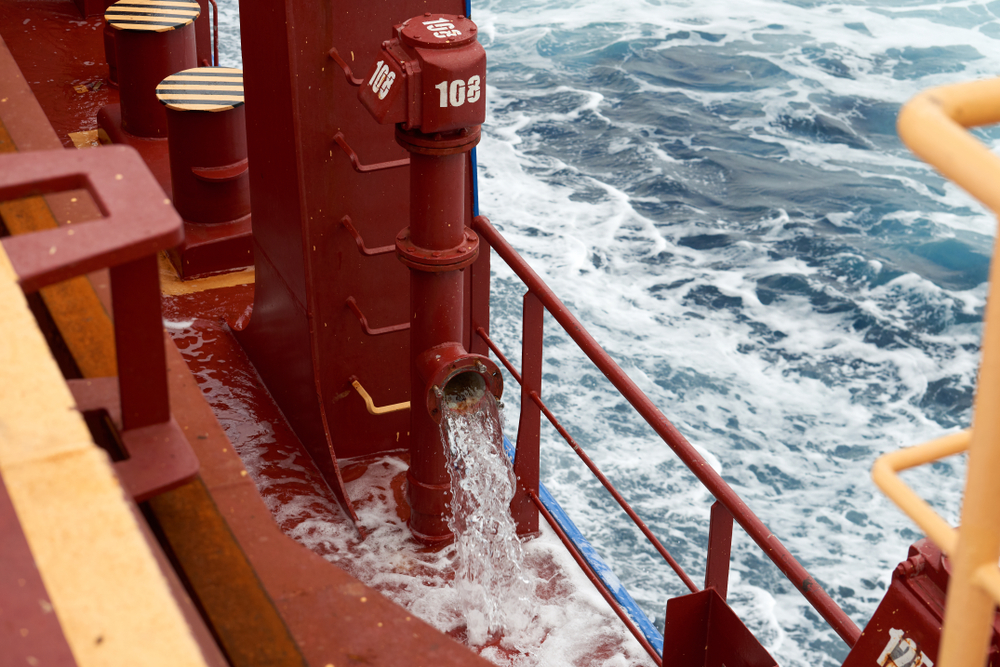The Center for Biological Diversity (CBD) and Friends of the Earth sued the EPA in the Northern District of California on February 6, 2023, for failing to finalize nationwide standards that would protect U.S. waterways from harmful vessel discharges.
The lawsuit states the EPA is more than 2 years behind schedule to establish standards for ballast water and other incidental discharges.
Ballast water can carry invasive pathogens (diseases), invasive species, and pollutants.
“Vessel pollution has spread harmful zebra mussels, coral diseases and even human pathogens,” a CBD press release says. “To improve stability, ships take up ballast water at their origins, and this water contains animals, plants and other organisms. The vessels carry that water to their destinations, where it is released and the foreign species are let out into the aquatic ecosystems. Some of these now-invasive species threaten native organisms and water quality. Communities with unreliable water treatment systems, including low-wealth and environmental justice communities, may be at heightened risk from introduced human pathogens.”
“The EPA has looked the other way for years as ships from all over the world dump disease-causing pathogens and invasive organisms that harm our waters and communities,” Miyoko Sakashita, oceans program director at the CBD, says in the press release. “Pollutants and invasive species like the invasive overbite clam are threats that demand action, and it’s absurd that the EPA has abdicated its duty for so long and neglected to set firm limits on ballast water.”
On December 4, 2018, Congress passed the Vessel Incidental Discharge Act (VIDA), consolidating laws that regulated vessel discharges to prevent the introduction of harmful pollutants. The law required the EPA to establish vessel discharge standards, including to control ballast water pollution, by December 4, 2020. While the EPA released a proposed rule on October 26, 2020, it has not been finalized.
The VIDA applies to:
- Commercial vessels greater than 79 feet (ft) in length;
- Other nonrecreational, non-armed forces vessels, such as research and emergency rescue vessels; and
- Ballast water only from small vessels (vessels less than 79 ft in length) and fishing vessels of all sizes.
The VIDA amended Clean Water Act (CWA) Section 312 by adding a new subsection (p) titled “Uniform National Standards for Discharges Incidental to Normal Operation of Vessels.” Subsection (p) requires the EPA and the U.S. Coast Guard (USCG) to develop new regulations for incidental discharges from regulated vessels into waters of the United States (WOTUS) and waters of the contiguous zone. The VIDA also includes other related amendments to the Act for enforcement authority, the creation of a coastal aquatic invasive species mitigation grant program and mitigation fund, and a Great Lakes and Lake Champlain Invasive Species Program.
These requirements apply to WOTUS, extending 12 miles from shore.
“The new VIDA requirements will apply once both EPA’s Vessel Incidental Discharge National Standards of Performance are finalized and the new USCG implementing regulations required under the VIDA are final, effective, and enforceable (required to be promulgated within two years after EPA’s national standards are promulgated),” states the EPA Commercial Vessel Discharge Standards website. “Until the USCG regulations are final, effective, and enforceable, non-recreational and non-Armed Forces vessels 79 feet in length and greater are subject to the existing discharge requirements established in EPA’s 2013 Vessel General Permit (VGP) and the USCG’s ballast water regulations, as well as any other applicable state and local government requirements.”
“For many years, the EPA specifically exempted ballast water from their regulations because the Coast Guard had taken a lead role in ballast water management,” according to a blog post by The National Sea Grant Law Center. “The Coast Guard issued nationwide ballast water regulations in 2001 pursuant to authority provided by the National Invasive Species Act of 1996. However, in 2003 a lawsuit was filed against the EPA because it denied a rulemaking petition aimed at getting the agency to draft regulations for ballast water. The plaintiffs in that lawsuit argued that the EPA’s decision to exempt ballast water from its regulations was improper under the [CWA], as ballast water discharge counts as point source pollution and can be contaminated with oil, chipped paint, rust, sediments, and toxins. … This lawsuit was ultimately successful, with the court ruling that the EPA exceeded its authority under the CWA in creating a ‘blanket exemption for discharges incidental to the normal operation of a vessel.’”
In a letter to President Joseph Biden, Jr., dated October 11, 2022, approximately 160 environmental, public health, and tribal organizations asked the chief executive to order the EPA to finalize the ballast water regulations.
According to Friends of the Earth, the “EPA is proposing to re-issue the same standards that the Court already rejected. The Court, scientists that EPA picked to study the issue, and published, peer-reviewed studies, have all found that there are commercially-available treatment systems that can consistently meet much higher standards.”
The lawsuit contends that the failure to issue the required regulations leaves in place the 2013 vessel general permit as the legal standard. In 2015, the 2nd Circuit Court of Appeals in New York held that those standards are inadequate to meet the CWA’s technology and water quality requirements mandated by Congress.
“That ruling remanded the permits to the agency but allowed them to stay in place during a review,” reports Reuters, which also noted the EPA declined to comment on the issue.
At this time, the reasons for the Agency’s delays in issuing the regulations are unknown, although many analysts believe the extreme understaffing issues the Agency is facing is one of the problems.
“The way forward for EPA is a no-brainer,” says Marcie Keever, oceans and vessels program director at Friends of the Earth. “Instead of allowing ships to use the worst treatment systems available, our regulatory agencies should require ships to use the best treatment systems, according to science and the law.”

